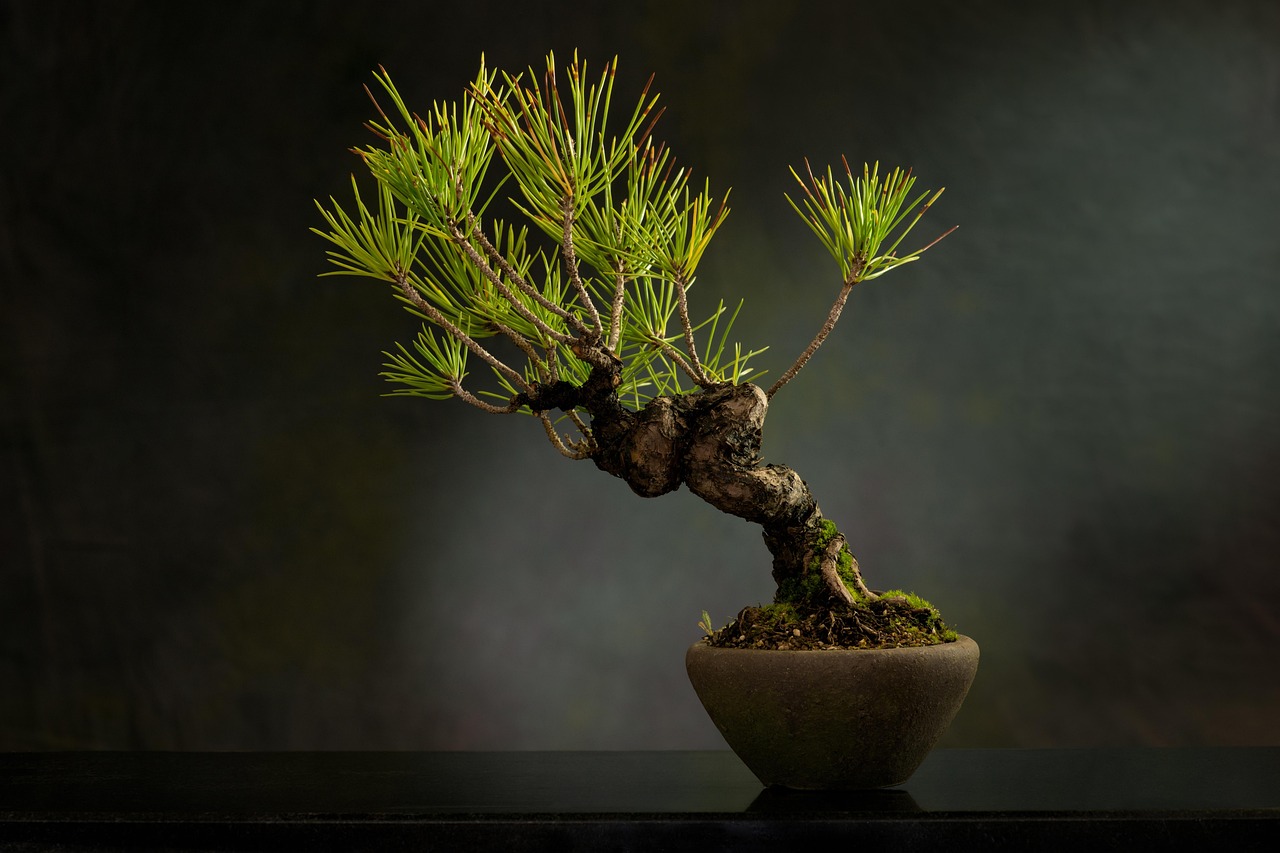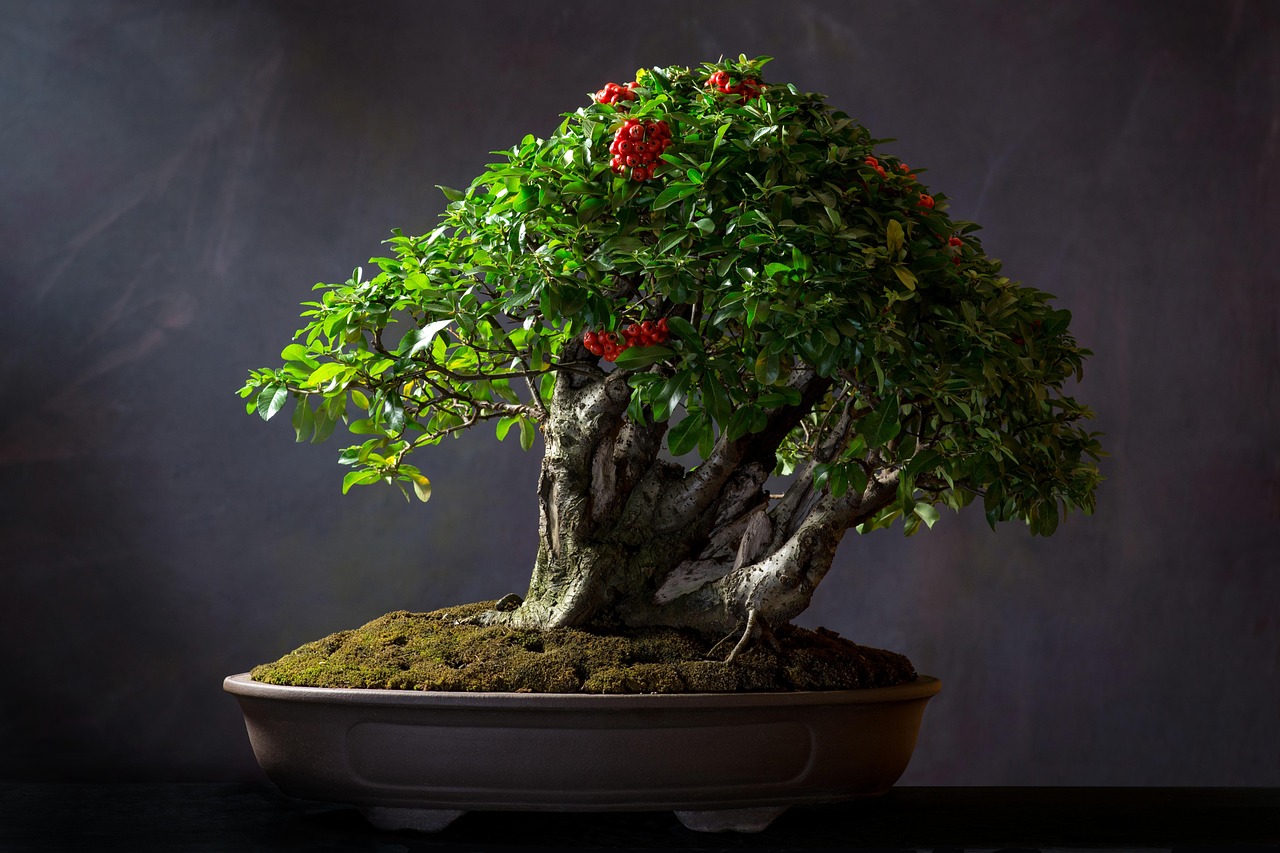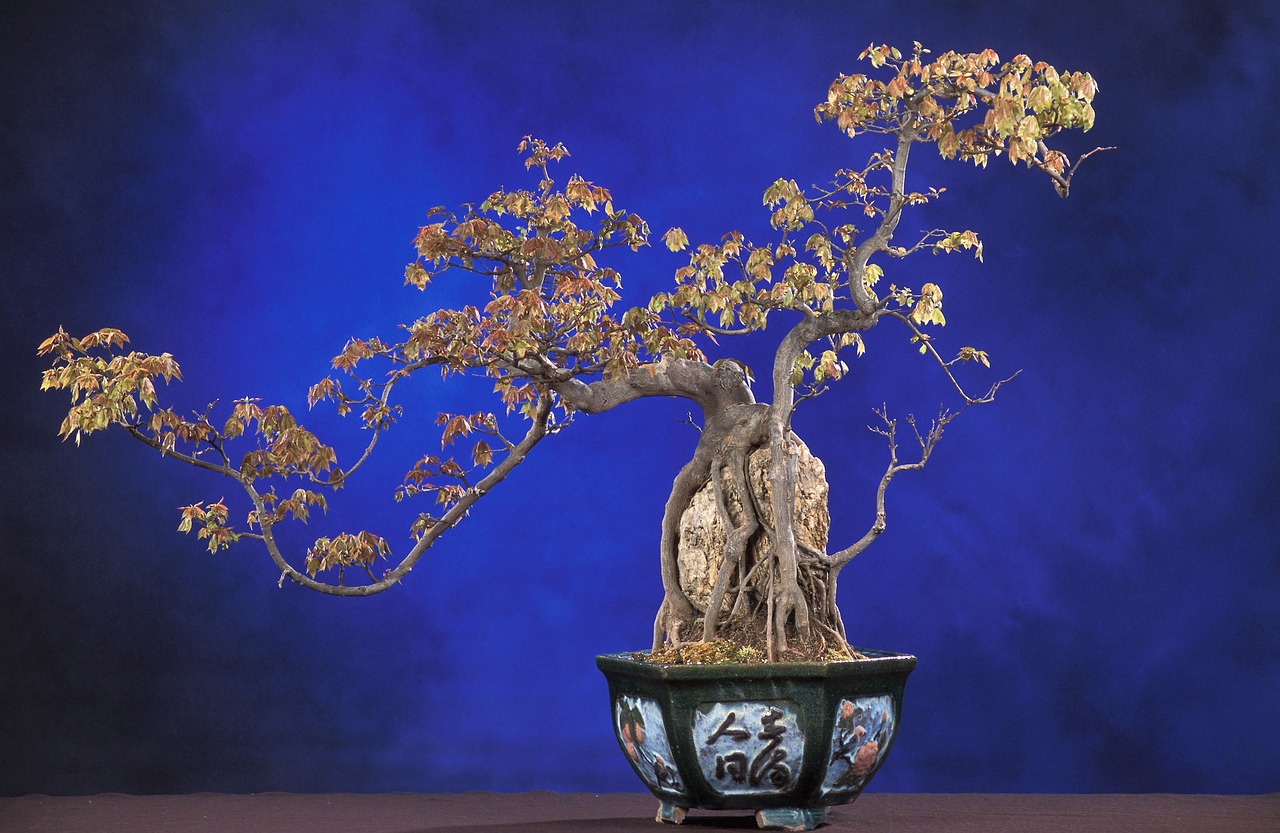Bonsai trees generally have a slower growth rate than their full-sized counterparts. The growth rate depends on factors such as species, age, pot size, climate, and care techniques. With proper care, most bonsai can grow several inches per year.
Bonsai is more than just a gardening practice; it is an art form that requires patience and dedication. Originating from ancient Chinese horticultural practices and refined in Japan, bonsai involves cultivating miniature trees in containers. The goal is to create an aesthetic representation of nature while maintaining the health and vitality of the tree. Understanding the growth rate of bonsai trees is essential for any enthusiast looking to nurture their plants effectively.

The growth rate of bonsai trees can vary significantly based on several factors. Some species may grow faster than others, while environmental conditions can play a pivotal role in their development. Additionally, the techniques used in care and maintenance can either promote or restrict growth. Below are some key factors that influence the growth rate of bonsai trees:
- Species: Different species of bonsai trees have varying growth rates. For example, Ficus and Juniper are known for relatively faster growth, while Pine and Spruce tend to grow more slowly.
- Age: Younger bonsai trees typically grow faster than older ones. As they mature, their growth rates may slow down considerably.
- Pot Size: The size of the pot can affect root development and overall growth. A smaller pot may restrict growth, while a larger pot can provide more space for root expansion.
- Climate: Temperature, humidity, and sunlight play crucial roles in growth rates. Most bonsai trees thrive in specific climate conditions that mimic their native environments.
- Care Techniques: Regular watering, fertilizing, and pruning are essential for optimal growth. Proper care ensures that the tree remains healthy and can grow effectively.
Understanding Growth Rates
The growth rate of a bonsai tree can be categorized into several stages. These stages reflect how the tree develops from a young sapling to a mature bonsai. Understanding these stages can help enthusiasts provide the right care at each phase of growth.
| Growth Stage | Typical Duration | Characteristics |
|---|---|---|
| Sapling | 0-2 Years | Rapid growth with developing roots and foliage. |
| Juvenile | 2-5 Years | Growth begins to slow; shaping techniques can be introduced. |
| Mature | 5+ Years | Growth is minimal; focus shifts to maintenance and refinement. |
During the sapling stage, bonsai trees experience rapid growth as they establish their roots and foliage. This is the ideal time to provide adequate light and nutrients to support healthy development. As the tree transitions into the juvenile stage, growth begins to slow down. This period often requires more attention to pruning techniques as enthusiasts start shaping their bonsai according to their vision.

Once a bonsai reaches maturity, its growth becomes minimal. At this stage, the focus changes from vigorous growth to maintaining the shape and health of the tree. Regular pruning, repotting, and fertilization become crucial to sustain its well-being. Understanding these stages allows bonsai enthusiasts to adapt their care techniques accordingly, ensuring their trees thrive at every phase of development.
In conclusion, maintaining a healthy bonsai involves understanding its unique growth rate and implementing appropriate care techniques. By observing the specific needs of the species and adapting care practices over time, gardeners can cultivate beautiful bonsai trees that flourish for years to come.
Factors Affecting Bonsai Growth Rate
Several factors can significantly influence the growth rate of bonsai trees. Understanding these factors will help enthusiasts provide the best care possible. Each element plays a role in determining how quickly and effectively a bonsai tree can grow.

Light Requirements
Light is one of the most important factors for the growth of bonsai trees. Different species have varying light needs, and providing the right amount of light is crucial for healthy growth. Here are some guidelines:
- Full Sun: Species such as Juniper and Ficus thrive in full sunlight. Ideally, they require at least 6 hours of direct sunlight each day.
- Partial Shade: Trees like Azaleas and Maples benefit from partial shade, especially during the hottest parts of the day.
- Indoor vs. Outdoor: Indoor bonsai trees generally need artificial light sources if natural sunlight is insufficient. Outdoor trees should be placed in suitable locations to maximize exposure.
Watering Practices
Proper watering is essential for the growth and health of bonsai trees. The amount of water needed can vary based on species, pot size, and environmental conditions. Here are some best practices for watering:
- Check Soil Moisture: Always check the soil moisture before watering. The top inch of soil should feel dry before you add more water.
- Avoid Overwatering: Overwatering can lead to root rot, which severely affects growth. Ensure that pots have good drainage.
- Seasonal Adjustments: Adjust watering frequency according to the season. Bonsai trees typically require more water during the growing season (spring and summer).
Soil Composition
The type of soil used for bonsai is crucial for proper drainage and nutrient retention. A well-draining mix allows for efficient root growth while preventing waterlogging. Key elements to consider include:

- Particle Size: Use a mix of fine and coarse particles to promote drainage and aeration.
- Nutrients: Incorporate organic materials like compost or peat moss to provide essential nutrients.
- Commercial Mixes: Many growers opt for commercially available bonsai soil mixes tailored to specific species.
Cultural Techniques to Enhance Growth
Cultural techniques encompass a range of practices that can enhance the growth rate and overall health of bonsai trees. Implementing these techniques helps ensure that the tree develops properly.
Fertilization
Fertilization is vital for supplying essential nutrients that promote growth. Different fertilizers serve various purposes, and understanding how to use them effectively is key.
- Types of Fertilizers: Organic options, such as fish emulsion or compost, provide slow-release nutrients. Chemical fertilizers usually offer a quick nutrient boost.
- Frequency: Fertilize during the growing season, typically every 4-6 weeks, depending on the type of fertilizer used.
- Dilution: Always dilute chemical fertilizers to avoid burning the roots.
Pruning Techniques
Pruning is essential not only for shaping the tree but also for encouraging new growth. It helps maintain a balance between foliage and roots.
- Structural Pruning: Remove larger branches to establish shape early on. This is often done in late winter or early spring.
- Maintenance Pruning: Regularly trim back new growth during the growing season to encourage bushier foliage.
- Crown Reduction: Reduce the height of the tree by cutting back the upper branches, which can help control overall size.
Pest and Disease Management
Pests and diseases can hinder growth and even threaten the life of a bonsai tree. Being proactive in pest management is crucial for maintaining healthy plants.
- Pest Identification: Common pests include aphids, spider mites, and scale insects. Regularly inspect your bonsai for signs of infestation.
- Treatment Options: Use insecticidal soap or neem oil to treat infestations organically. Chemical pesticides may be necessary for severe cases.
- Disease Prevention: Maintain good airflow around the tree and avoid overhead watering to minimize fungal diseases.
Caring for bonsai trees requires a comprehensive understanding of their needs and growth patterns. By paying close attention to light, water, soil, fertilization, pruning, and pest management, enthusiasts can successfully cultivate thriving bonsai that exhibit both beauty and health.
Seasonal Care for Bonsai Trees
Understanding how to care for bonsai trees throughout the seasons is vital for promoting healthy growth and development. Each season presents unique challenges and opportunities for bonsai enthusiasts. By adjusting care techniques according to seasonal changes, gardeners can optimize conditions for their trees.
Spring Care
Spring marks the beginning of the growing season for most bonsai trees. As temperatures rise and daylight increases, it’s important to focus on revitalizing the tree after winter dormancy.
- Repotting: This is an ideal time to repot your bonsai. Fresh soil will provide essential nutrients and promote root growth. Choose a container that accommodates the root system without being overly large.
- Fertilization: Begin fertilizing your bonsai as new growth appears. Use a balanced fertilizer to support the initial growth spurts.
- Pruning: Perform structural pruning in late winter or early spring before new growth begins. Remove dead or weak branches to encourage healthy development.
Summer Care
Summer brings longer days and warmer temperatures, which can accelerate growth. However, it also introduces challenges such as increased water needs and potential pests.
- Watering: Increase watering frequency as the heat can dry out the soil quickly. Monitor soil moisture levels closely to ensure the tree does not suffer from drought stress.
- Pest Control: Inspect your bonsai regularly for pests. If detected, treat infestations promptly to prevent damage to new growth.
- Shade Management: For species sensitive to intense sunlight, consider providing afternoon shade to prevent leaf scorch.
Autumn Care
As temperatures begin to cool, autumn is a crucial time for preparing bonsai trees for winter dormancy.
- Pruning and Shaping: Autumn is a great time for maintenance pruning. Shape your bonsai by trimming back excessive growth, focusing on creating a balanced silhouette.
- Fertilization: Reduce fertilization as growth slows. Switch to a low-nitrogen fertilizer to prepare the tree for dormancy.
- Watering Adjustments: Maintain watering as needed, but be cautious not to over-water as temperatures drop.
Winter Care
Winter presents unique challenges as bonsai trees enter dormancy. Proper care during this time is essential for survival and future growth.
- Protection from Cold: Depending on the species, some bonsai may need protection from freezing temperatures. Consider moving indoor trees closer to windows and outdoor trees to sheltered locations.
- Minimal Watering: Reduce watering significantly during dormancy. Allow the soil to dry out more between waterings, but monitor for signs of dehydration.
- No Fertilization: Avoid fertilizing during winter months, as the tree is not actively growing.
Understanding Growth Timelines
The growth timeline of bonsai trees can vary widely depending on species and care techniques. However, there are general benchmarks that can serve as guidelines for enthusiasts.
| Growth Milestone | Typical Age Range | Description |
|---|---|---|
| Sapling Stage | 0-2 Years | Rapid initial growth; focus on root establishment. |
| Shaping Period | 2-5 Years | Slower growth; shaping techniques are introduced. |
| Mature Bonsai | 5+ Years | Minimal growth; maintenance and refinement are key. |
During the sapling stage, bonsai trees often experience rapid growth as they establish their roots and foliage. This is the time when providing adequate light, water, and nutrients is critical. As the tree enters the shaping period, growth becomes slower, and enthusiasts start implementing different techniques to shape their bonsai according to their vision.
The mature bonsai stage signifies that the tree has reached its desired size and form. At this point, growth slows significantly, and care focuses more on maintaining shape through regular pruning and monitoring health conditions. Understanding these timelines helps enthusiasts set realistic expectations and tailor their care strategies accordingly.
By adapting care practices according to seasonal changes and understanding growth timelines, bonsai enthusiasts can create an environment that fosters healthy development and ensures beautiful results over time.
As bonsai enthusiasts gain experience, they often discover that successful cultivation is an evolving journey. The techniques and strategies discussed throughout this article provide a solid foundation for nurturing bonsai trees. However, the art of bonsai is also about adaptability and continuous learning. Each tree has its unique personality and needs, requiring careful observation and adjustment of care practices.
Advanced Techniques for Bonsai Cultivation
For those looking to deepen their bonsai knowledge and skills, several advanced techniques can significantly enhance growth and aesthetics. These methods require a more hands-on approach and a greater understanding of plant biology.
Wiring for Shape
Wiring is a common technique used to shape bonsai trees. This process involves wrapping wire around branches to guide their growth into desired positions. Here are some key points regarding wiring:
- Timing: It is best to wire branches during the growing season when they are flexible. Avoid wiring during dormancy.
- Wire Selection: Use aluminum or copper wire, which can hold its shape while being lightweight and easy to manipulate.
- Monitoring: Check regularly to ensure the wire does not cut into the bark as the branch grows.
Grafting Techniques
Grafting allows growers to combine different species or varieties of trees, often for aesthetic purposes or to enhance growth characteristics. This technique requires careful planning and execution:
- Choosing Scions: Select healthy branches from a tree you wish to graft onto your bonsai.
- Techniques: Familiarize yourself with various grafting techniques, such as approach grafting or cleft grafting, depending on your desired outcome.
- Aftercare: Keep the grafted area moist and protected until it heals and integrates with the host tree.
Creating Bonsai Forests
Bonsai forests consist of multiple trees planted together to mimic a natural landscape. This technique requires an understanding of composition and balance:
- Tree Selection: Choose species that complement each other in terms of size, shape, and foliage.
- Planting Arrangement: Vary heights and spacing to create depth. A triangular layout often works well for visual balance.
- Maintenance: Each tree must be cared for individually, ensuring that all plants receive adequate light, water, and nutrients.
Final Thoughts
Caring for bonsai trees is a rewarding endeavor that combines patience, artistry, and horticultural knowledge. As discussed, understanding growth rates, seasonal care, and specific techniques is crucial for success. Bonsai cultivation is not merely about growing a tree; it is about fostering a living piece of art that reflects the gardener’s vision and dedication.
As you continue your journey with bonsai, remember that each tree will present unique challenges and rewards. Embrace the learning process and adapt your care practices as you gain more experience. Whether you are a novice or an experienced grower, the beauty of bonsai lies in its capacity for growth, transformation, and expression.
Ultimately, the joy of bonsai gardening comes from watching your efforts flourish over time. With careful attention to detail and a commitment to learning, you can create stunning bonsai that bring beauty and tranquility into your life for years to come.
Engage with fellow bonsai enthusiasts through forums or local clubs to share experiences and tips. The community aspect of bonsai cultivation can enhance your understanding and appreciation of this ancient art form. Enjoy the process, celebrate your successes, and learn from any setbacks along the way.
